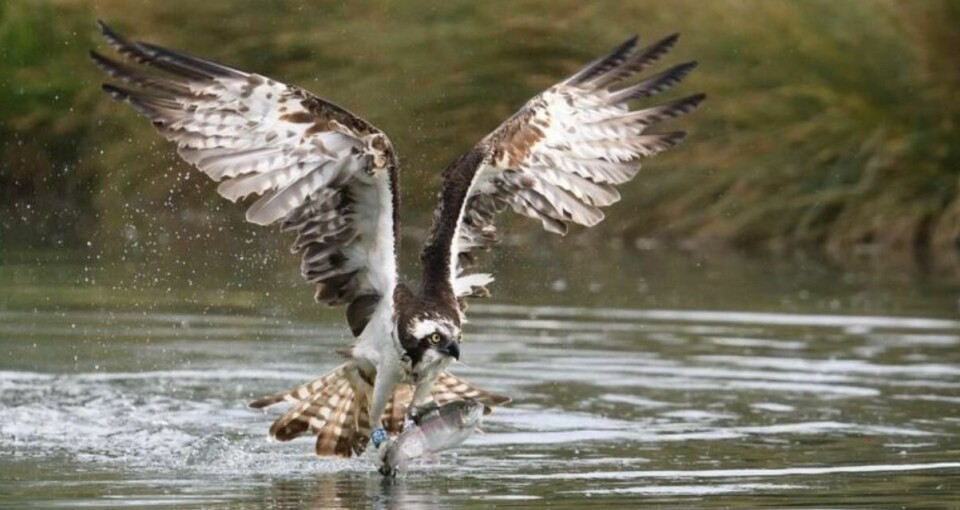
Photographers hooked by trout farm’s ospreys
A trout farm in England has found an unusual way of offsetting losses caused by ospreys preying on its stock - by turning the predators into a paying attraction for wildlife photographers.
Visitors from the likes of Germany, Spain and the Netherlands have paid the entrance fee to a hide set up at the farm to see the birds swooping down on a pond at Horn Mill Trout Farm in Rutland in the East Midlands.
Manager Jamie Weston told the BBC it has allowed them to restructure the fish farm business and keep local wildlife fed.
Chicks from Scotland
Ospreys chicks were brought from Scotland to Rutland in 1996 and 2005 as part of efforts to reintroduce the bird of prey to England.
As the number of ospreys increased, the number of trout at the nearby farm decreased, and by 2013 losses were costing the business £20,000 a year.
After netting five of the six ponds at the farm to stop the birds stealing the fish, the farm’s management was approached by the Rutland Osprey Project, which suggested leaving the largest pond uncovered.
In return, the project built a four-person hide for photographers.
Bigger bird hide
Weston told the BBC management were “apprehensive” about the idea at first.
“It’s not a massive money spinner, but it makes it worthwhile and has allowed us to restructure the business,” he said.
The increasing amount of wildlife and demand from photographers wanting to picture it has led to the farm owner, Lawrence Ball, rebuilding the hide to fit more people, said the BBC.
Horn Mill is the hatchery for the River Gwash trout farm, which supplies trout fisheries.























































